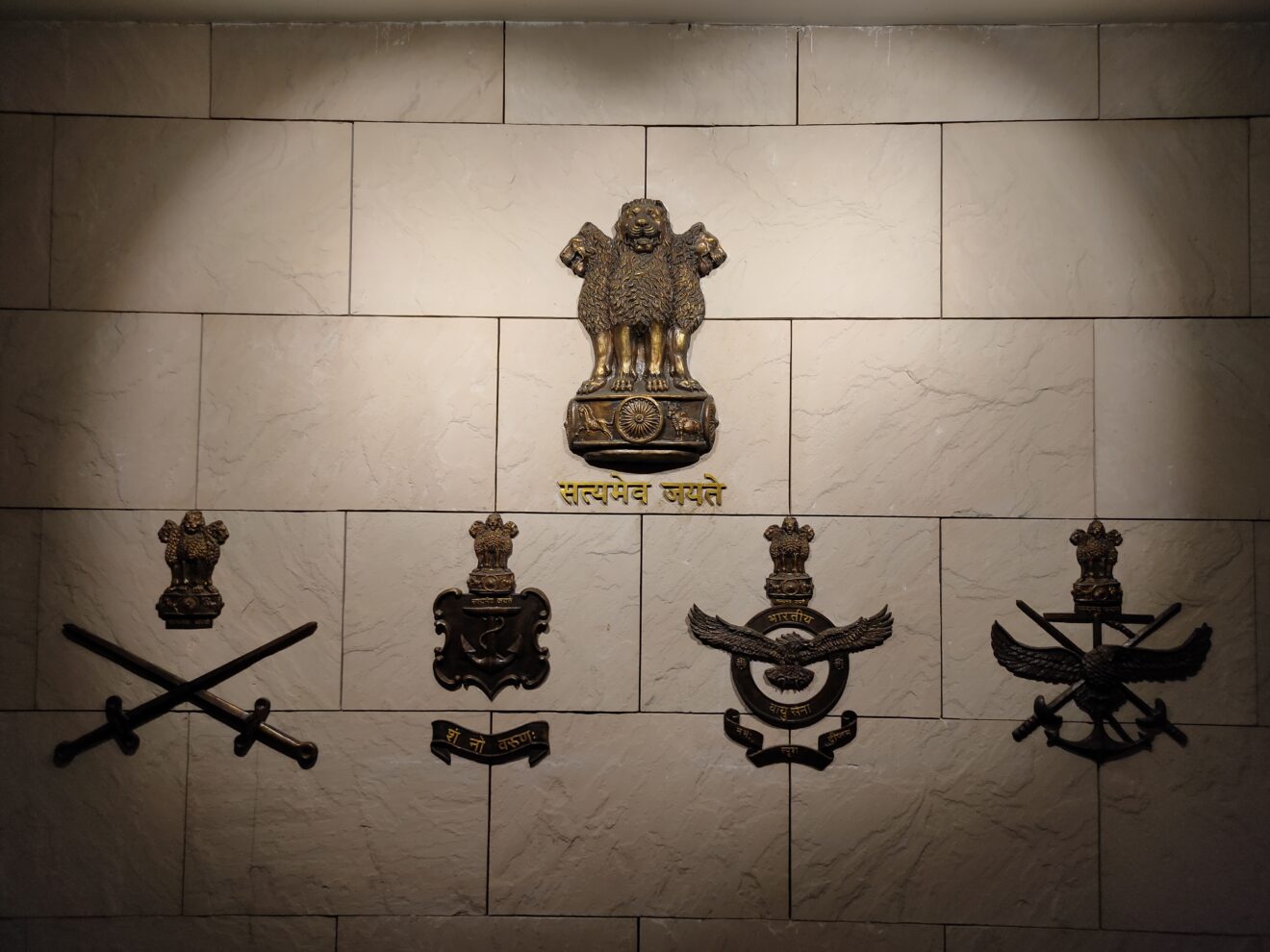BY DEFENCE JOURNALIST SAHIL | T.I.N. NETWORK
HAL to Co-Fund Deck-Based Multi Role Helicopter (DBMRH) Development — 30% Investment from Own Resources, CCS Approval Awaited for Full-Scale Execution
Bengaluru / New Delhi | 5 November 2025
In a landmark step for India’s indigenous defence manufacturing and naval aviation capability, Hindustan Aeronautics Limited (HAL) has officially committed to finance 30% of the design and development costs of the ambitious Deck-Based Multi Role Helicopter (DBMRH) project from its own internal resources. The remaining 70% of the project cost will be funded by the Government of India, subject to final approval by the Cabinet Committee on Security (CCS) for the project’s full-scale execution.
The DBMRH programme, a pivotal part of India’s naval aviation roadmap, aims to develop an advanced, twin-engine, multi-role helicopter capable of operating from the decks of Indian Navy warships and aircraft carriers. Once inducted, the DBMRH will replace ageing fleets of Sea King Mk42B/42C and Kamov Ka-28 helicopters, providing the Indian Navy with a next-generation, indigenous maritime rotorcraft designed for anti-submarine warfare (ASW), anti-surface warfare (ASuW), search and rescue (SAR), and electronic intelligence (ELINT) missions.
HAL’s Commitment: A Strategic Investment in India’s Self-Reliance
According to official sources, HAL has undertaken this partial self-funding initiative as a demonstration of its confidence in India’s long-term defence manufacturing ecosystem and its commitment to “Atmanirbhar Bharat in Defence”. The decision to invest approximately 30% from internal resources — amounting to several thousand crores — underscores HAL’s proactive stance in accelerating the indigenous development cycle.
HAL’s leadership reportedly views this as a strategic, future-oriented investment that will not only bolster India’s naval capabilities but also open the door to export potential in friendly nations seeking cost-effective, carrier-capable platforms.
The project is currently in the design validation and prototype preparation phase, and once the CCS approval is secured, the full-scale development and testing will commence under a joint HAL–Indian Navy collaboration framework.
Project Overview and Strategic Significance
The DBMRH will feature foldable rotor blades, marinized systems, and enhanced corrosion protection, enabling it to operate from aircraft carriers, frigates, and destroyers. It will also integrate advanced avionics, AESA-based maritime radars, and indigenous weapon systems, making it a completely Indian solution to the Navy’s multi-role helicopter needs.
Defence analysts believe that once operational, the DBMRH could position India among the limited group of nations — such as the US, UK, and France — capable of designing and producing complex naval helicopters. The programme will also complement the ongoing IMRH (Indian Multi Role Helicopter) project, which aims to replace medium-lift utility helicopters across the Army and Air Force.
The synergy between IMRH and DBMRH — both sharing a common core airframe architecture — is expected to reduce development time, logistics cost, and training overheads, while enhancing overall mission versatility across the services.
Government Support and Policy Implications
The Government of India, through the Ministry of Defence, has expressed strong support for the DBMRH project, seeing it as a key deliverable under the Defence Acquisition Procedure (DAP) 2020 and the Make-I category for high-value indigenous R&D programmes.
The final CCS (Cabinet Committee on Security) approval is awaited and is expected to pave the way for full-scale development and prototype flight testing within the next three years, followed by limited series production.
Senior naval officers have already termed DBMRH as the “future backbone of Indian Navy’s deck-based aviation”, aligning with the Navy’s long-term maritime capability development plan, especially as India expands its aircraft carrier fleet under the INS Vikrant-class and IAC-2 programmes.
Industry Impact and the Road Ahead
Industry experts highlight that HAL’s self-investment sets a strong precedent for other Public Sector Undertakings (PSUs) and private defence companies to co-invest in critical national programmes rather than relying entirely on government funding. The move may also attract global partnerships for specific subsystems such as maritime radar integration, sonar suites, and helicopter engine co-development.
The DBMRH’s eventual success could further accelerate India’s journey towards becoming a global helicopter manufacturing hub, with potential exports to nations in Southeast Asia, Africa, and the Indian Ocean Region (IOR).
If timelines hold, the first prototype is expected by 2028, with serial production around 2030, making it a crucial addition to India’s maritime force projection capability.
By Defence Journalist Sahil
भारतीय नौसेना के लिए आत्मनिर्भरता की उड़ान — HAL अपने संसाधनों से DBMRH परियोजना में करेगा 30% निवेश, शेष 70% लागत सरकार वहन करेगी, CCS से मंजूरी का इंतजार
बेंगलुरु / नई दिल्ली | 5 नवम्बर 2025
भारत की स्वदेशी रक्षा निर्माण क्षमता को नई ऊँचाइयों पर ले जाते हुए हिंदुस्तान एयरोनॉटिक्स लिमिटेड (HAL) ने घोषणा की है कि वह Deck-Based Multi Role Helicopter (DBMRH) परियोजना की डिज़ाइन और डेवलपमेंट लागत का 30 प्रतिशत हिस्सा अपने संसाधनों से वहन करेगा, जबकि शेष 70 प्रतिशत लागत भारत सरकार द्वारा वहन की जाएगी। परियोजना के पूर्ण क्रियान्वयन के लिए अब कैबिनेट कमेटी ऑन सिक्योरिटी (CCS) की अंतिम मंजूरी का इंतजार है।
DBMRH परियोजना भारतीय नौसेना के लिए एक अत्याधुनिक ट्विन-इंजन मल्टी-रोल हेलीकॉप्टर विकसित करने की दिशा में एक निर्णायक कदम है, जो एंटी-सबमरीन वॉरफेयर (ASW), एंटी-सर्फेस वॉरफेयर (ASuW), सर्च एंड रेस्क्यू (SAR) और इलेक्ट्रॉनिक इंटेलिजेंस (ELINT) जैसे अभियानों में सक्षम होगा। इसके आने से नौसेना के पुराने सी किंग और कामोव Ka-28 हेलीकॉप्टरों को प्रतिस्थापित किया जाएगा।
HAL की आत्मनिर्भर पहल: भारतीय रक्षा उद्योग में स्व-निवेश की मिसाल
HAL का यह निर्णय “आत्मनिर्भर भारत” की भावना को सशक्त बनाता है। अपने आंतरिक संसाधनों से लगभग 30% वित्तीय निवेश करने का निर्णय यह दर्शाता है कि HAL न केवल तकनीकी रूप से आत्मविश्वासी है, बल्कि वह देश की नौसेना शक्ति को स्वदेशी तकनीक के माध्यम से आत्मनिर्भर बनाने के लिए प्रतिबद्ध है।
कंपनी ने इसे रणनीतिक निवेश करार दिया है, जो आने वाले वर्षों में भारत की नौसैनिक एविएशन क्षमता को मजबूत करेगा और साथ ही मित्र देशों को निर्यात की संभावनाएँ भी खोलेगा।
परियोजना का महत्व और रणनीतिक दृष्टिकोण
DBMRH को इस तरह से डिज़ाइन किया जा रहा है कि वह विमानवाहक पोतों, फ्रिगेट्स और डेस्ट्रॉयर्स पर आसानी से तैनात हो सके। इसमें फोल्डेबल रोटर ब्लेड, मरीनाइज्ड सिस्टम, और कोरोशन प्रोटेक्शन जैसी विशेषताएँ होंगी। हेलीकॉप्टर में इंडिजिनस रडार, एवियोनिक्स और हथियार प्रणाली शामिल की जाएंगी।
विशेषज्ञों का मानना है कि इस परियोजना के सफल होने पर भारत उन चुनिंदा देशों की श्रेणी में शामिल होगा जो कैरीयर-कैपेबल मल्टी-रोल हेलीकॉप्टर स्वयं विकसित करने में सक्षम हैं — जैसे अमेरिका, ब्रिटेन और फ्रांस।
यह परियोजना IMRH (Indian Multi Role Helicopter) कार्यक्रम के समानांतर चलेगी, जिससे उत्पादन लागत और समय दोनों में कमी आएगी और थ्री-सर्विस ऑपरेशनल कम्पैटिबिलिटी सुनिश्चित होगी।
सरकारी समर्थन और भविष्य की राह
रक्षा मंत्रालय ने DBMRH परियोजना को Make-I कैटेगरी में रखा है, जिसके तहत सरकार स्वदेशी अनुसंधान और विकास को प्राथमिकता देती है। CCS की स्वीकृति मिलने के बाद अगले तीन वर्षों में प्रोटोटाइप का उड़ान परीक्षण शुरू होने की उम्मीद है।
भारतीय नौसेना के वरिष्ठ अधिकारियों के अनुसार, DBMRH आने वाले समय में नौसेना की डेक-बेस्ड एविएशन का रीढ़ साबित होगा, खासकर तब जब देश की INS विक्रांत जैसी एयरक्राफ्ट कैरियर श्रृंखला और IAC-2 कार्यक्रम विस्तार की दिशा में बढ़ रहे हैं।
उद्योग जगत में प्रभाव
HAL का यह स्व-निवेश कदम अन्य रक्षा क्षेत्र के PSUs और निजी कंपनियों के लिए एक उदाहरण बनेगा। इससे यह संकेत मिलता है कि अब देश के बड़े उद्योग रक्षा अनुसंधान में केवल सरकारी फंडिंग पर निर्भर नहीं रहेंगे, बल्कि वे राष्ट्रहित के परियोजनाओं में सह-निवेश करेंगे।
अनुमान है कि DBMRH का पहला प्रोटोटाइप साल 2028 तक तैयार हो सकता है, जबकि 2030 के आसपास इसका सीमित उत्पादन शुरू हो जाएगा — जो भारत की समुद्री सामरिक शक्ति में एक ऐतिहासिक मील का पत्थर होगा।














Add Comment